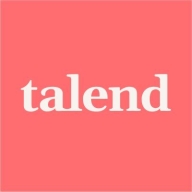

Ab Initio Co>Operating System and Talend Open Studio compete in the data integration domain. Ab Initio excels in performance and scalability, while Talend stands out for accessibility and open-source flexibility.
Features: Ab Initio Co>Operating System includes parallel processing, dynamic metadata management, and enterprise-grade capabilities. Talend Open Studio offers open-source architecture, extensive connectivity, and adaptability for diverse data integration tasks.
Ease of Deployment and Customer Service: Ab Initio's deployment is complex, requiring skilled personnel but offers dedicated support. Talend Open Studio is user-friendly with community support, allowing quicker deployment and simplicity.
Pricing and ROI: Ab Initio Co>Operating System requires a significant upfront investment yielding high ROI for complex data needs. Talend Open Studio's open-source nature provides cost-effective implementation with a faster ROI for small to mid-sized organizations.

Ab Initio Co>Operating System is used for data integration, ETL processes, and complex data transformations. It is robust in handling large-scale data processing and batch processing, offering scalability, reliability, and performance for managing heavy workloads.
Ab Initio Co>Operating System provides real-time data processing capabilities, an intuitive meta-programming environment, and efficient batch job execution. Users appreciate its flexibility in supporting various data sources and platforms. Primary use cases involve addressing complex data transformations and integration needs, enhancing productivity and efficiency.
What are the key features of Ab Initio Co>Operating System?Industries implement Ab Initio Co>Operating System for its reliable data integration and ETL capabilities. Financial services use it for processing large volumes of transactional data, while retail sectors apply it for real-time analysis of customer data. Healthcare organizations leverage its robust processing for managing patient records and data aggregation.
Talend Open Studio is a free, open source ETL tool for data integration and Big Data. The solution enables you to extract diverse datasets and normalize and transform them into a consistent format which can be loaded into a number of third-party databases and applications.
Talend Open Studio Features
Talend Open Studio has many valuable key features. Some of the most useful ones include:
Talend Open Studio Benefits
There are several benefits to implementing Talend Open Studio. Some of the biggest advantages the solution offers include:
Reviews from Real Users
Below are some reviews and helpful feedback written by PeerSpot users currently using the Talend Open Studio solution.
Elio B., Data Integration Specialist/CTO at Asset messages, says, "The solution has a good balance between automated items and the ability for a developer to integrate and extend what he needs. Other competing tools do not offer the same grade of flexibility when you need to go beyond what is provided by the tool. Talend, on the other hand, allows you to expand very easily."
A Practice Head, Analytics at a tech services company mentions, “The data integration aspect of the solution is excellent. The product's data preparation features are very good. There's very useful data stewardship within the product. From a technical standpoint, the solution itself is pretty good. There are very good pre-built connectors in Talend, which is good for many clients or businesses, as, in most cases, companies are dealing with multiple data sources from multiple technologies. That is where a tool like Talend is extremely helpful.”
Prerna T., Senior System Executive at a tech services company, comments, “The best thing I have found with Talend Open Studio is their major support for the lookups. With Salesforce, when we want to relate our child objects to their parent object, we need to create them via IDs. Then the upsert operation, which will allow you to relate a child object to the event, will have an external ID. That is the best thing which keeps it very sorted. I like that.”
An Implementation Specialist, Individual Contributor at a computer software company, states, “I can connect with different databases such as Oracle Database or SQL Server. It allows you to extract the data from one database to another. I can structure the data by filtering and mapping the fields.” He also adds, “It is very user-friendly. You need to know the basics of SQL development or SQL queries, and you can use this tool.”
PeerSpot user Badrakh V., Information System Architect at Astvision, explains, "The most valuable features are the ETL tools."
We monitor all Data Integration reviews to prevent fraudulent reviews and keep review quality high. We do not post reviews by company employees or direct competitors. We validate each review for authenticity via cross-reference with LinkedIn, and personal follow-up with the reviewer when necessary.